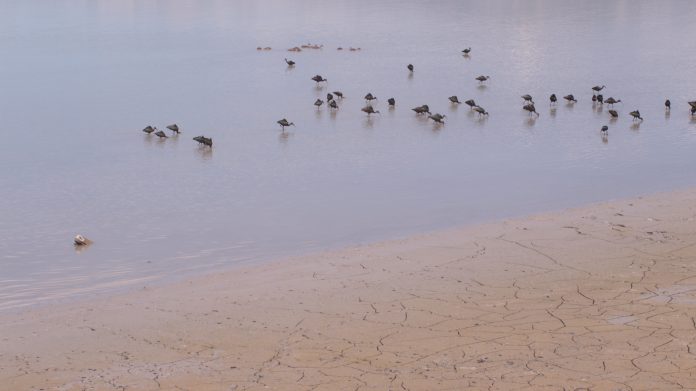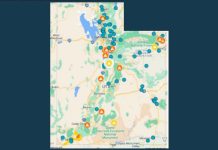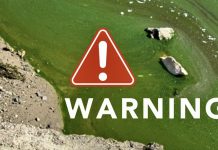
PROVO, Utah, Aug. 8, 2018 (Gephardt Daily) — Health officials have placed all of Utah Lake on a ‘warning’ level Wednesday due to a potentially harmful algal bloom, officials said.
The public and their pets are warned to stay out of the lake due to the discovery of a blue-green algal bloom, according to a news release from the Utah County Health Department.
The Utah Department of Environmental Quality’s Division of Water Quality has collected samples at the lake and found the presence of algal species that have the potential to produce toxins, the news release said. Water sample results throughout the lake have cell concentrations significantly over the recommended warning threshold level.
“Water with these levels of concentration in the algal bloom pose health risks,” said Eric Edwards, deputy director of Utah County Health Department, in a prepared statement. “To protect the health of people and animals that use the lake, it is important for the public to be aware of the warning on the lake.”
Those recreating on Utah Lake should take caution and avoid areas of scum. Recreationists are advised to be mindful of conditions, as they may change over the course of the day.
“Although blue-green algae are a natural part of many freshwater ecosystems, under the right conditions they can grow rapidly,” the news release said. “High levels of nutrients in the water, combined with warm temperatures, abundant sunlight, and calm water, can promote growth, resulting in extensive blooms. These blooms consist of cyanobacteria, often referred to as blue-green algae, a type of bacteria that poses risks to humans, wildlife, domestic animals, and fish.”
Symptoms of exposure include headache, fever, diarrhea, abdominal pain, nausea and vomiting, and sometimes allergic-like reactions from skin contact.
For concerns about possible human exposure, call the Utah Poison Control Center at 800-222-1222, or your physician.
DEQ’s Division of Water Quality sent samples to the Utah Public Health Lab for further toxin analysis. Results should be available soon. Updates will be posted here.





